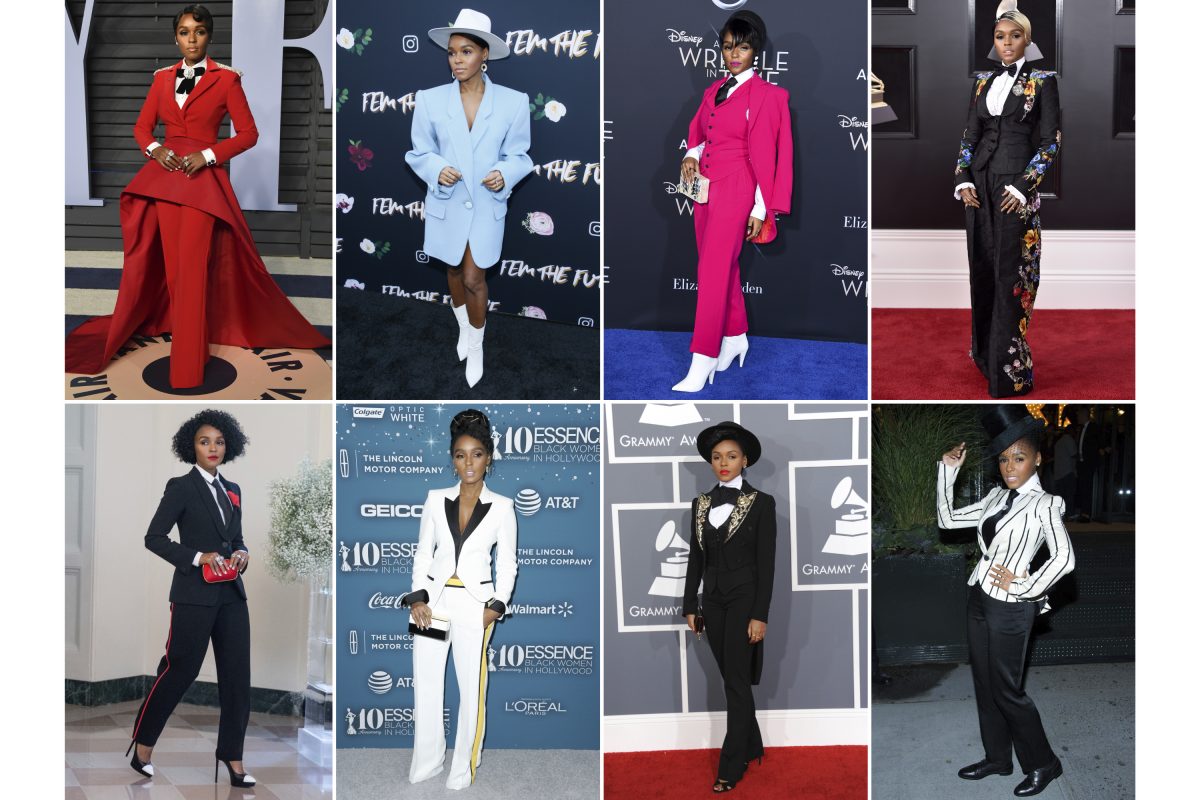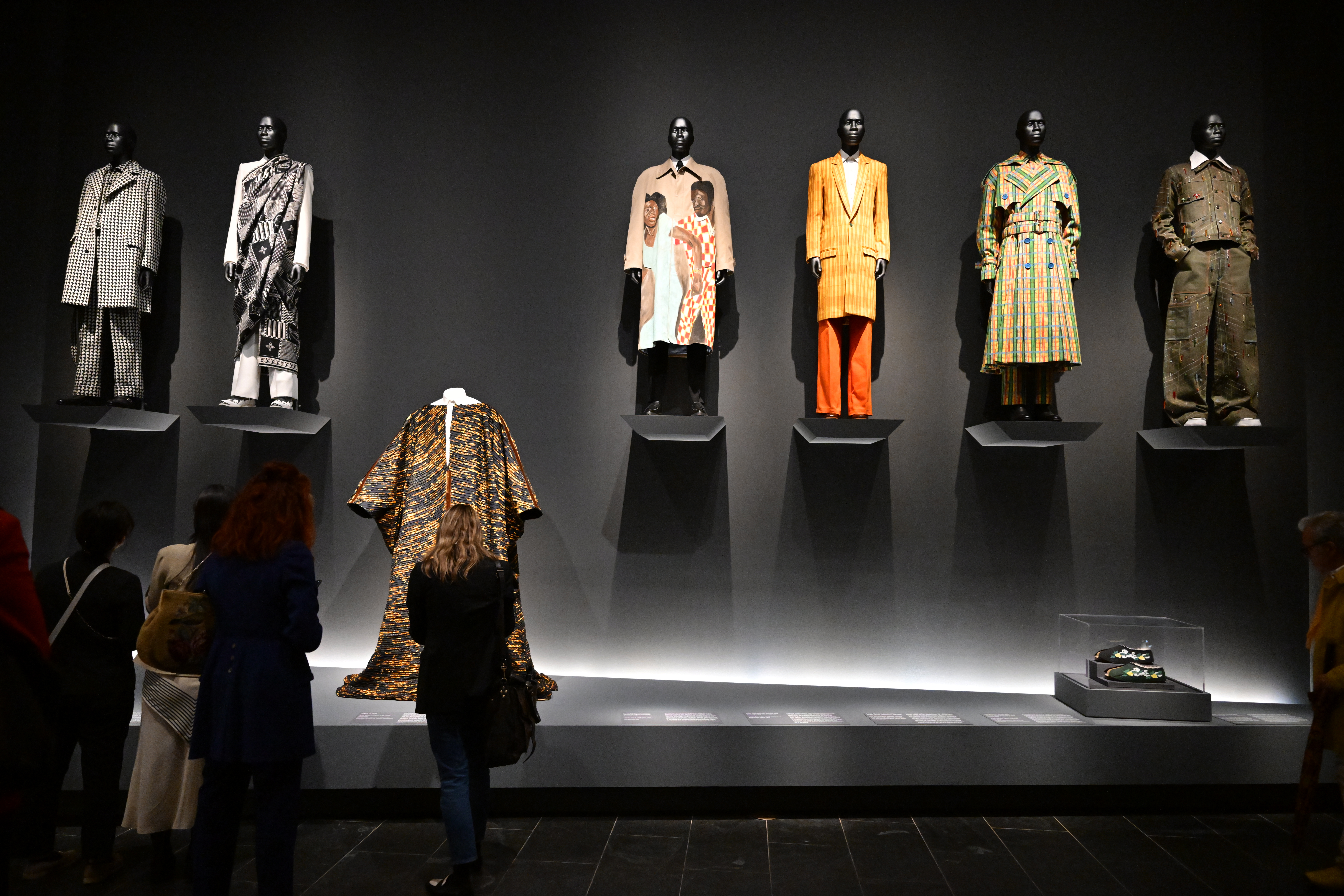Black Dandyism Powers the Met Gala: A Style Revolution!
Dandyism Reigns: Black Fashion's Met Gala Takeover
Introduction: Beyond the Runway, A Legacy Unveiled
Fashion is more than just fabric and trends; it's a statement, a rebellion, and a reflection of culture. And sometimes, it’s a carefully constructed identity, a powerful performance. Fashion icons like Dapper Dan, Janelle Monáe, and the late André Leon Talley have captivated us with their distinctive approaches to sartorial style – bold splashes of color, luxurious fabrics, playful construction, capes – but is there a common thread weaving their tailored looks together? Fashion historians and savants agree: It's dandyism, and it's having a major moment.
This history-laden style movement is taking center stage as part of the Metropolitan Museum of Art’s Costume Institute spring exhibit, “Superfine: Tailoring Black Style,” kicking off with the biggest night in fashion, Monday’s Met Gala. Get ready for a visual feast that celebrates the power, creativity, and historical significance of Black dandyism.
The "Superfine" Exhibit: Decoding Black Style
Inspired by Monica Miller’s book, “Slaves to Fashion: Black Dandyism and the Styling of Black Diasporic Identity,” the exhibit focuses on Black style, specifically menswear from the 18th century to the present day, with dandyism serving as the unifying theme. Think of it as a deep dive into how Black men have used fashion as a tool for self-expression, resistance, and the construction of a powerful, unapologetic identity.
What Exactly Is Dandyism? More Than Just Looking Good
So, what is dandyism? Is it simply about wearing expensive clothes? Not quite. It’s an attitude, a philosophy, a way of life. In the simplest terms, dandyism is a cultural movement that emerged in the late 18th and early 19th centuries, characterized by refined elegance, meticulous attention to detail in dress, and a deliberate rejection of prevailing social norms. Think of it as an artistic rebellion expressed through sartorial choices.
A Brief History of Dandyism
Dandyism originated in Europe, particularly in England and France. Figures like Beau Brummell, often considered the epitome of the dandy, established a new standard of male elegance, favoring understated sophistication over ostentatious displays of wealth. His emphasis on perfectly tailored garments, immaculate grooming, and effortless grace revolutionized men's fashion.
Black Dandyism: Reclaiming Power Through Style
But what happens when you apply this concept to the Black experience? That's where things get really interesting. Black dandyism takes the core principles of dandyism – self-definition, elegance, and resistance – and infuses them with the unique challenges and triumphs of the Black diaspora. It’s about taking control of your narrative and presenting yourself to the world on your own terms.
The Roots of Black Dandyism in Resistance
For centuries, Black people have faced systemic oppression and discrimination. Fashion became a powerful tool to counter these negative stereotypes. By adopting a dandy aesthetic, Black men and women were able to challenge the dominant narrative, assert their dignity, and reclaim their agency. It was a way of saying, "You may try to define me, but I will define myself, one perfectly tailored suit at a time."
Dapper Dan: The Harlem Dandy Who Redefined Luxury
No discussion of Black dandyism is complete without mentioning Dapper Dan. He took high-fashion logos and blended them with hip-hop culture, creating a unique and influential style that resonated deeply within the community. He dressed everyone from Mike Tyson to Salt-N-Pepa, shaping the aesthetic of an entire generation.
From Streetwear Icon to Luxury Collaborator
Dapper Dan's journey is a testament to the power of Black creativity. He started out as a street-style innovator, facing legal challenges for his use of designer logos. Today, he has a partnership with Gucci, a symbol of the fashion industry's recognition of his talent and influence. It’s a story of perseverance, resilience, and the eventual triumph of authentic style.
Janelle Monáe: A Futuristic Dandy Icon
Janelle Monáe is a modern-day dandy, pushing the boundaries of gender and style. Her signature tuxedo-inspired looks are a powerful statement about individuality and self-expression. She fearlessly experiments with fashion, blurring the lines between masculinity and femininity, and inspiring countless others to embrace their unique identities.
The Power of the Tuxedo: A Gender-Bending Statement
Monáe’s consistent use of the tuxedo is a deliberate act of subversion. The tuxedo, traditionally associated with male formalwear, becomes a canvas for her to express her fluid gender identity and challenge societal norms. It’s a powerful reminder that fashion can be a tool for liberation and self-discovery.
André Leon Talley: The High Priest of Fashion
The late André Leon Talley was a force of nature in the fashion world. His encyclopedic knowledge of fashion history, his flamboyant style, and his unapologetic personality made him a true icon. He championed Black designers and voices, using his platform to advocate for greater diversity and inclusion within the industry.
A Legacy of Inspiration and Advocacy
Talley's impact on fashion extends far beyond his personal style. He was a mentor, a champion, and a voice for the underrepresented. His legacy will continue to inspire generations of Black creatives to pursue their dreams and challenge the status quo.
The Met Gala: A Stage for Black Dandyism
The Met Gala, with its focus on fashion as art, is the perfect platform to showcase the beauty and power of Black dandyism. Expect to see designers and celebrities pushing the boundaries of style, celebrating Black heritage, and making bold statements about identity and self-expression.
What to Expect at the "Superfine" Met Gala
Imagine a red carpet overflowing with impeccably tailored suits, vibrant colors, and unexpected details. Think of it as a celebration of Black creativity, a reclamation of space, and a powerful declaration of self-love. It’s going to be a night to remember, and a moment of visibility for a style movement that has been shaping culture for centuries.
Beyond the Gala: The Enduring Influence of Black Dandyism
Black dandyism isn't just a trend; it's a cultural force that has been shaping fashion and identity for generations. Its influence can be seen in streetwear, hip-hop culture, and high fashion. It’s a reminder that style is more than just what you wear; it's about how you carry yourself, how you express yourself, and how you challenge the world around you.
How Black Dandyism Inspires Us All
Whether you’re into fashion or not, there’s something incredibly inspiring about Black dandyism. It’s a celebration of individuality, a rejection of conformity, and a reminder that you have the power to define yourself on your own terms. So go ahead, embrace your inner dandy, and let your style speak volumes.
Conclusion: A Revolution in Tailoring Black Style
Black dandyism is far more than just an aesthetic. It's a powerful statement about identity, resilience, and the enduring pursuit of self-expression in the face of adversity. From the streets of Harlem to the halls of the Met, Black dandyism continues to inspire and redefine the boundaries of fashion. The "Superfine: Tailoring Black Style" exhibit promises to be a landmark moment, celebrating the legacy and ongoing influence of this vibrant and vital cultural movement. It is a reminder that fashion can be a powerful tool for resistance, self-expression, and the creation of a more inclusive and equitable world.
Frequently Asked Questions (FAQs)
Here are some frequently asked questions about dandyism and its significance within Black culture:
- What's the difference between dandyism and simply being well-dressed?
Dandyism is more than just wearing nice clothes. It's a deliberate cultivation of style, often with an element of rebellion and a focus on self-expression through clothing and personal grooming. It's about the attitude and the philosophy behind the look.
- How did slavery and the Jim Crow era influence the development of Black dandyism?
During these periods, Black people often faced restrictions on their freedom and self-expression. Dandyism became a way to reclaim agency and assert dignity in the face of oppression. By dressing impeccably, Black individuals could challenge negative stereotypes and project an image of self-respect and defiance.
- Are there any contemporary designers who are influenced by Black dandyism?
Absolutely! Many contemporary designers draw inspiration from Black dandyism. Names like Wales Bonner, Telfar Clemens, and Kerby Jean-Raymond (of Pyer Moss) often incorporate elements of tailoring, bold colors, and historical references into their designs, celebrating Black heritage and challenging traditional notions of luxury.
- Is dandyism exclusively a male style?
While historically associated with men, dandyism is not exclusively male. Women can embrace dandyism too, often challenging gender norms and expressing their individuality through tailored clothing, sophisticated accessories, and a confident attitude. Think of Marlene Dietrich in her iconic suits – a true dandy in her own right!
- How can I incorporate elements of dandyism into my own style?
Start by focusing on fit and tailoring. Invest in well-made pieces that flatter your body. Experiment with bold colors and patterns, and don't be afraid to accessorize. Most importantly, embrace your own unique style and express yourself with confidence. Dandyism is about self-expression, so have fun with it!

